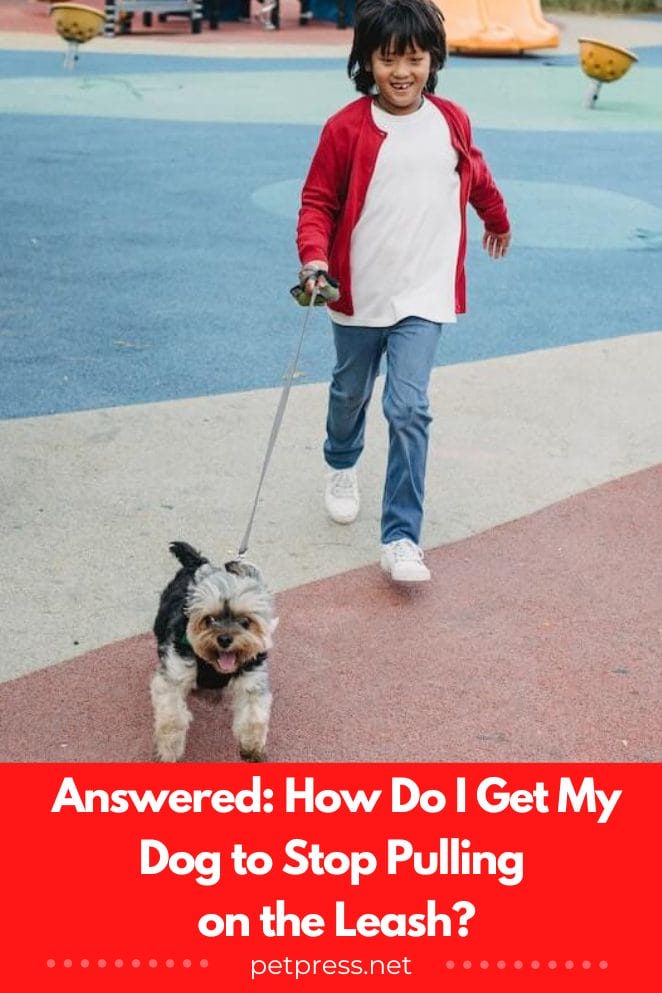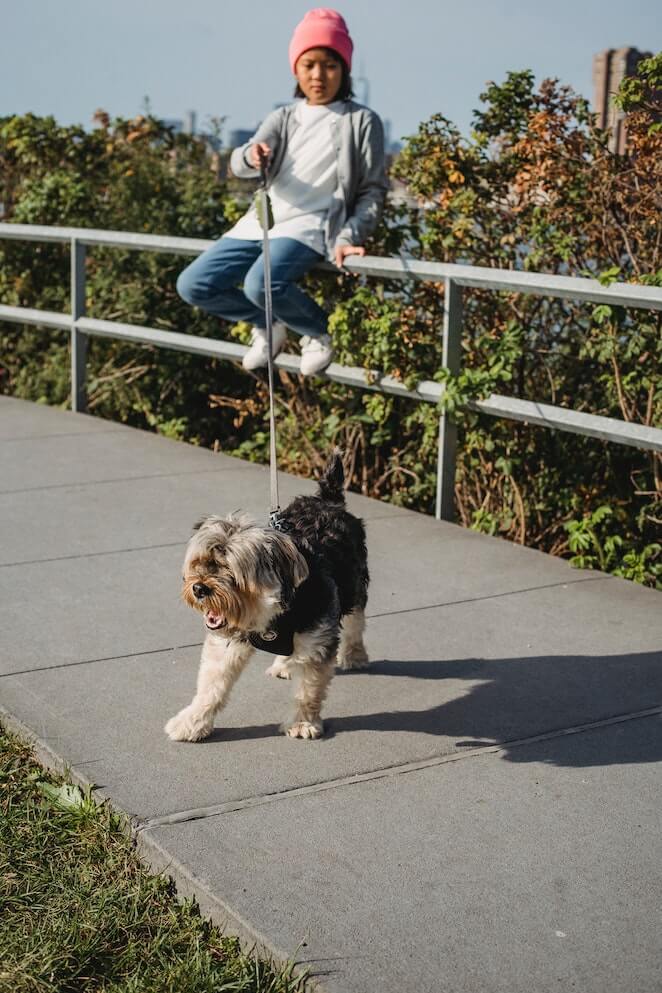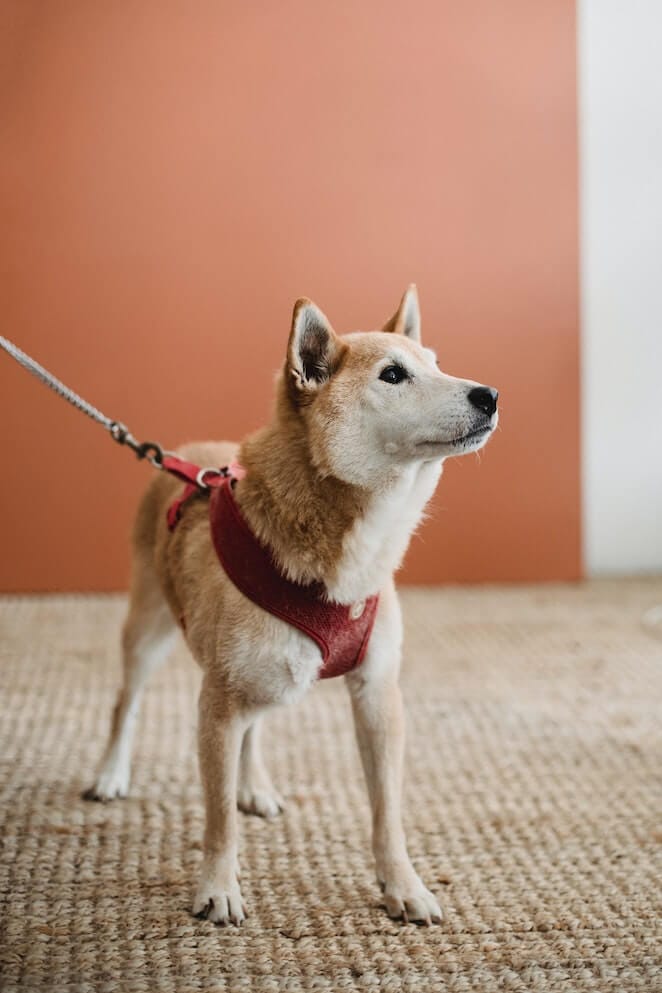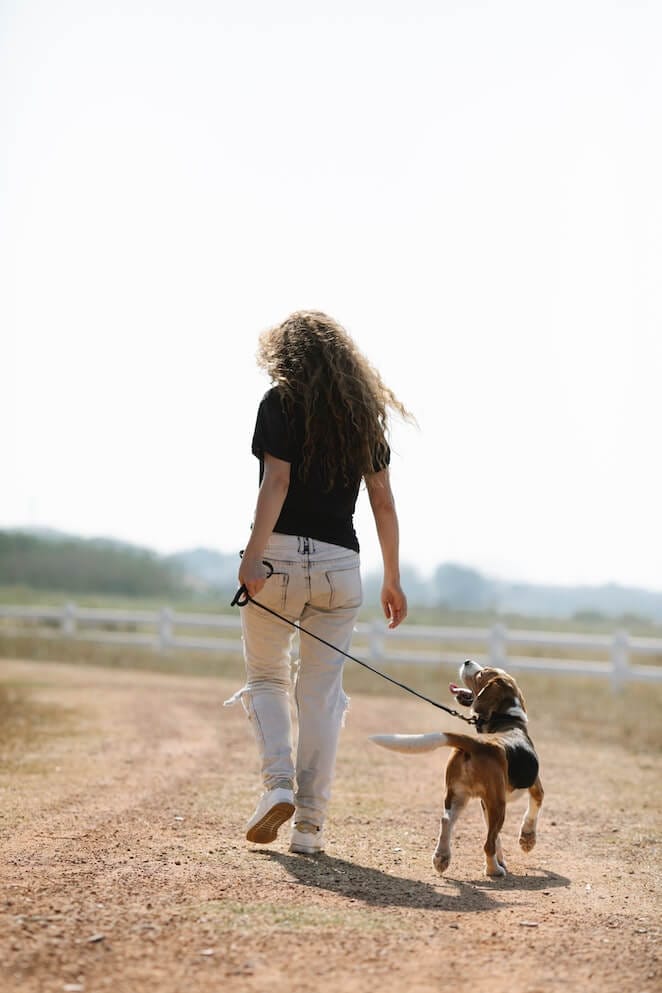
If you are also wondering that “How do I get my dog to stop pulling on the leash” then you have stumbled upon the perfect guide that you can follow.
There would have been those days with you when you are walking peacefully down the lane with your dog. Suddenly, you feel a tug and in a split second, you get pulled by your dog!
Dogs get distracted easily. After all, there are so many distractions on a walk. Like butterflies, squirrels, and of course, a cute dog.
These distractions cause them to lose control and they start pulling their leash. And then all hell breaks loose!
Let’s begin by answering the most common questions that dog parents have.
Why does my dog keep pulling on the leash?

There are a few reasons why your dog might be pulling on the leash.
They may be excited to go for a walk, they may want to explore their surroundings, or they may be trying to get away from something. Here are five common reasons why dogs pull on the leash:
1. Excitement
One of the most common reasons dogs pull on the leash is because they’re simply excited to be going for a walk.
This is especially true if your dog is normally kept indoors or doesn’t get out much. They may start sniffing the ground out of curiosity.
They may be so excited that they can’t help but pull on the leash until they finally get to where they’re going.
2. Exploration
Another reason dogs pull on their leash is because they want to explore their surroundings.
This is especially common in puppies who are still learning about the world around them. They may be so curious that they pull on the leash to get closer to everything they see.
3. Attention seeking
Some dogs pull on the leash because they’re trying to get attention from their owners.
This can be especially true if the dog is used to getting a lot of attention when they do something bad like jumping on people or barking.
They may think that pulling on the leash is a way to get their owner’s attention and maybe even some praise or treats.
4. Fear or anxiety
In some cases, dogs might pull on the leash because they’re afraid or anxious about something. This could be anything from another dog to loud noise.
If your dog seems to be pulling on the leash out of fear, it’s important to try to help them feel more comfortable and safe.
5. Separation anxiety
Finally, some dogs pull on the leash because they’re experiencing separation anxiety.
This is a type of anxiety that can occur when a dog is separated from their owner or someone they’re close to.
Dogs with separation anxiety may pull on the leash as a way to try to get back to their owner.
If your dog is pulling on the leash, it’s important to try to figure out why they’re doing it. Once you know the reason, you can work on training them not to do it.
Do dogs grow out of leash pulling?

It’s a common question from dog parents: will my pup outgrow their leash-pulling habit? The answer, unfortunately, is not always straightforward.
There are a number of factors that can influence whether or not a dog will outgrow their leash-pulling behavior. Let’s take a look at a few of them.
It’s important to understand that leash pulling is often motivated by excitement or anxiety. If your dog is anxious or fearful when they’re on a leash, they may be more likely to continue pulling as they grow older.
On the other hand, if your dog is simply excited about going for a walk, they may be more likely to outgrow the behavior.

Some dogs simply have a stronger desire to pull than others. This may be due to genetics or early learning experiences. If your dog has always been a strong leash puller, they’re likely to continue the behavior into adulthood.
Finally, it’s important to remember that leash pulling is a learned behavior. This means that if you consistently reinforce the behavior, your dog is more likely to continue doing it.
For example, if you allow your dog to keep moving forward when they pull on the leash, they’ll learn that pulling gets them what they want.
So, if you consistently correct your dog for pulling and make sure they only move forward when they’re walking calmly, they’ll learn that this is the desired behavior.
All this eventually comes down to, will your dog outgrows their leash-pulling habit. There’s no guarantee, but it’s certainly possible.
How do I train my dog not to pull on the leash?

It’s a great question and one that can be solved with a little patience and training. Here are five ways you can train your dog not to pull on the leash:
1. Get a Good Leash:
The first step in training your dog not to pull is to make sure you have a good leash. A comfortable, well-made leash will make walks more enjoyable for both you and your dog. Avoid cheap leashes that rub your hands or loosen easily.
2. Start Slow:
When you first start walking with your dog, go slowly and let them get used to the leash. If they start to pull, stop and make them wait until they calm down before continuing.
3. Change Directions:
If your dog starts to pull ahead of you, change directions. This will confuse them and make them think they need to pay attention to you in order to know where to go.
4. Stop and Start:
Another way to keep your dog from pulling is to stop frequently on your walk. When they realize that walking with you means stopping often, they’ll be less likely to pull ahead.
5. Reward Good Behavior:
Finally, remember to praise your dog when they walk nicely on a leash. This will reinforce the behavior you want and make it more likely that they’ll continue walking politely by your side.
Find ways to bond with your dog so that they listen to you when you tell them not to pull the leash.
Conclusion
The best way to ensure that your dog doesn’t continue this behavior into adulthood is to start training them early and be consistent with your corrections.
With time and patience, you can help your dog learn to walk calmly on a leash – and enjoy walks together for years to come.


GIPHY App Key not set. Please check settings